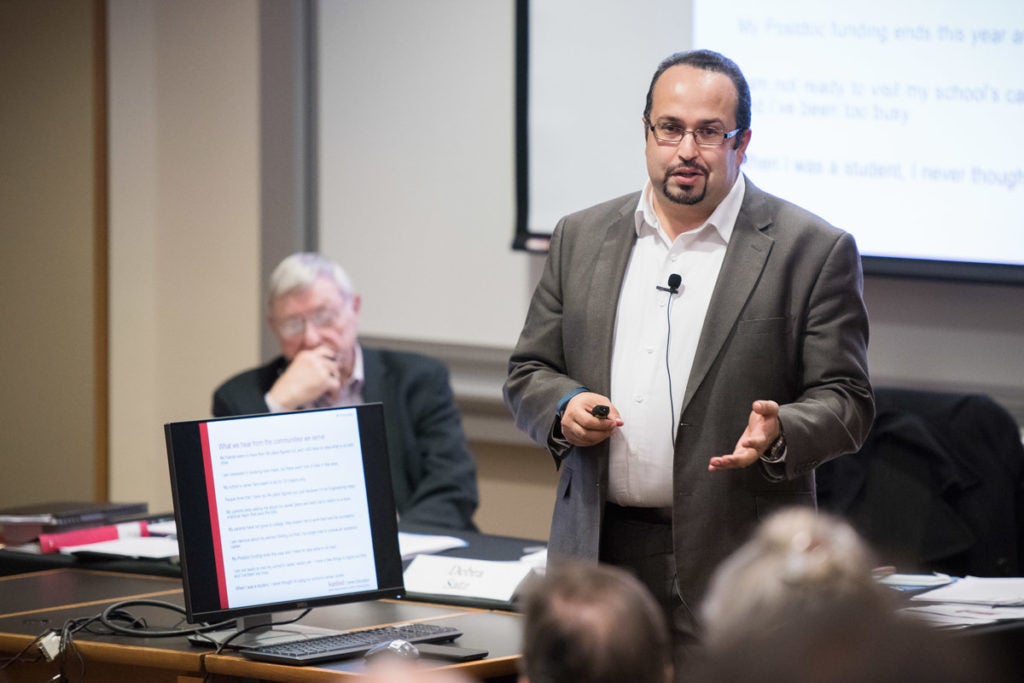Stanford’s transformation of career education

In recent years, Stanford has transformed career education on campus by adopting a new philosophy that highlights meaningful work, connections and communities—an approach that is reflected in its name, Bridging Education, Ambition and Meaningful Work (BEAM), Farouk Dey, dean of career education, recently told the Stanford Faculty Senate.
“This is not your typical college placement and career counseling center anymore,” said Dey, who is also an associate vice provost for student affairs. “At Stanford, we have invented the new paradigm of college career education, which has inspired many colleges and universities in the United States and around the world – connecting students to meaningful work by engaging community.”
Since establishing the new model and restructuring its teams in 2014, BEAM has tripled the number of students and alumni-mentor connections, engaged a wider diversity of employers, attracted more than 20,000 employment and internship opportunities in various sectors each year, and quadrupled enrollment of its career courses, thanks in part to Life Design Lab, a joint venture of BEAM and the d.school at Stanford.
Dey said 72 percent of graduates have had at least one internship before leaving Stanford.
Since launching Handshake in 2015, BEAM has seen an exponential increase in student and employer engagement. Handshake is an online platform that connects students with a diverse range of employers, events and opportunities.
Dey said BEAM has launched new initiatives aimed at students in the humanities and sciences, including the Stanford Meaningful Work Certificate, a two-quarter program that connects students with career coaches, alumni mentors and employers, and the BEAM Fellows, a new program that connects undeclared freshmen and sophomores who are considering the arts and humanities with internship opportunities made available by Stanford alumni.
In partnership with several campus partners, BEAM has also developed programs for PhDs and postdoctoral scholars, such as PhD Pathways, a daylong career education conference designed to inform and educate doctoral students and postdocs about the career paths that exist in academia and beyond. In addition, BEAM offers a 7-week interactive Career Community Cohort Program designed to help students develop their career-related knowledge in a small, community-style settings.
Looking ahead, Dey said BEAM will need the help of campus partners to tackle several challenges: engaging more students early and often in career education programs and services; engaging faculty in a meaningful way with its mission and activities; increasing career programs for underrepresented minority students; and creating a “safe space” for PhD students to explore careers beyond academia.
Day said BEAM would appreciate help from parents, guardians and families to encourage their students to engage in up to two career education programs and services every quarter throughout their time at Stanford, especially those majoring in the humanities and sciences who may need more guidance on how to translate their learning into meaningful work.
Employers visit campus to recruit students in all majors throughout the year, alumni are always eager to serve as mentors and BEAM educators are available to provide guidance and support. Taking the first step in career exploration can be challenging for students, especially considering their very busy schedules. Parents, guardians and families can help students prioritize this area and manage their time around it.
More information on career resources for parents and families is available at the BEAM website.
